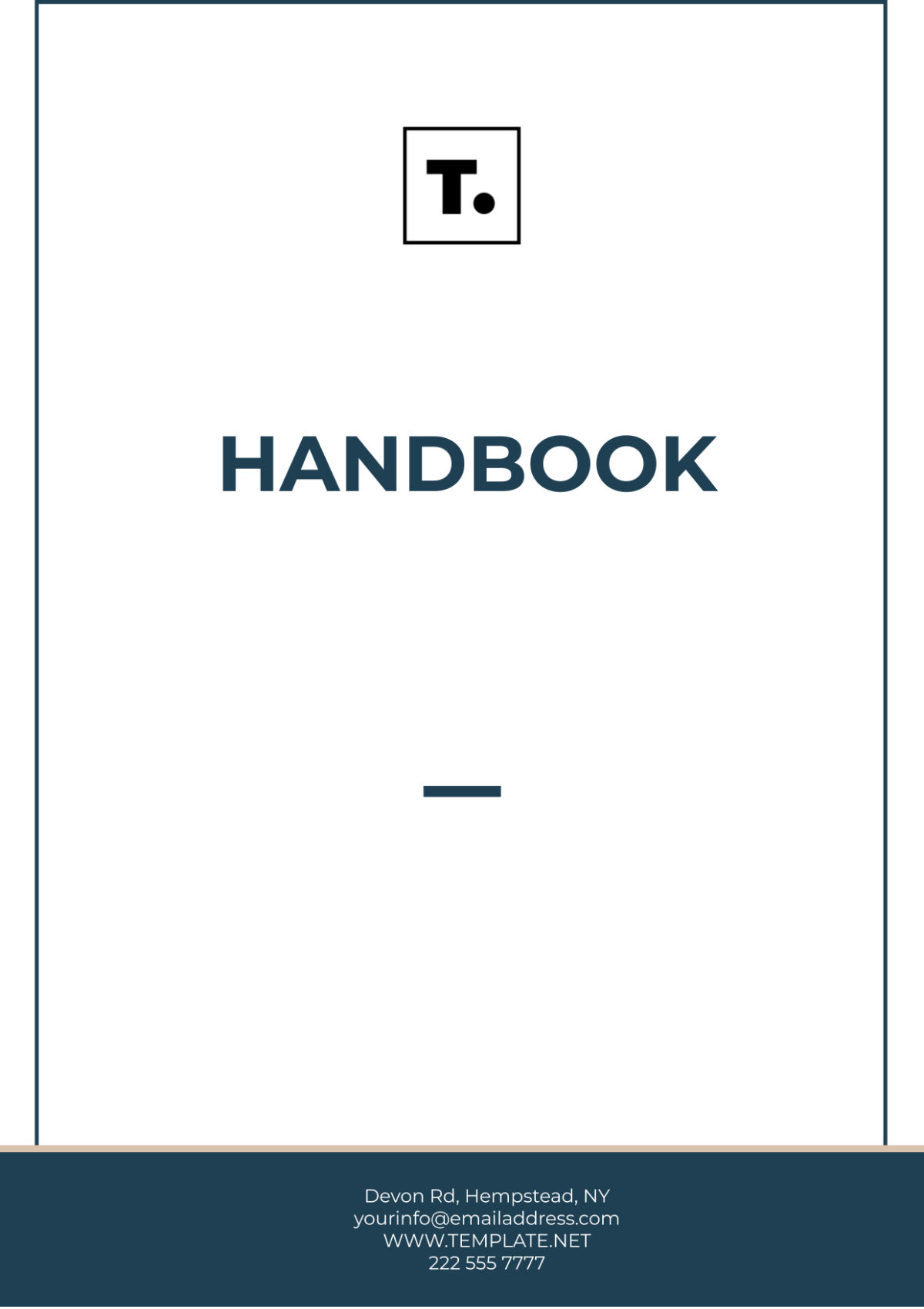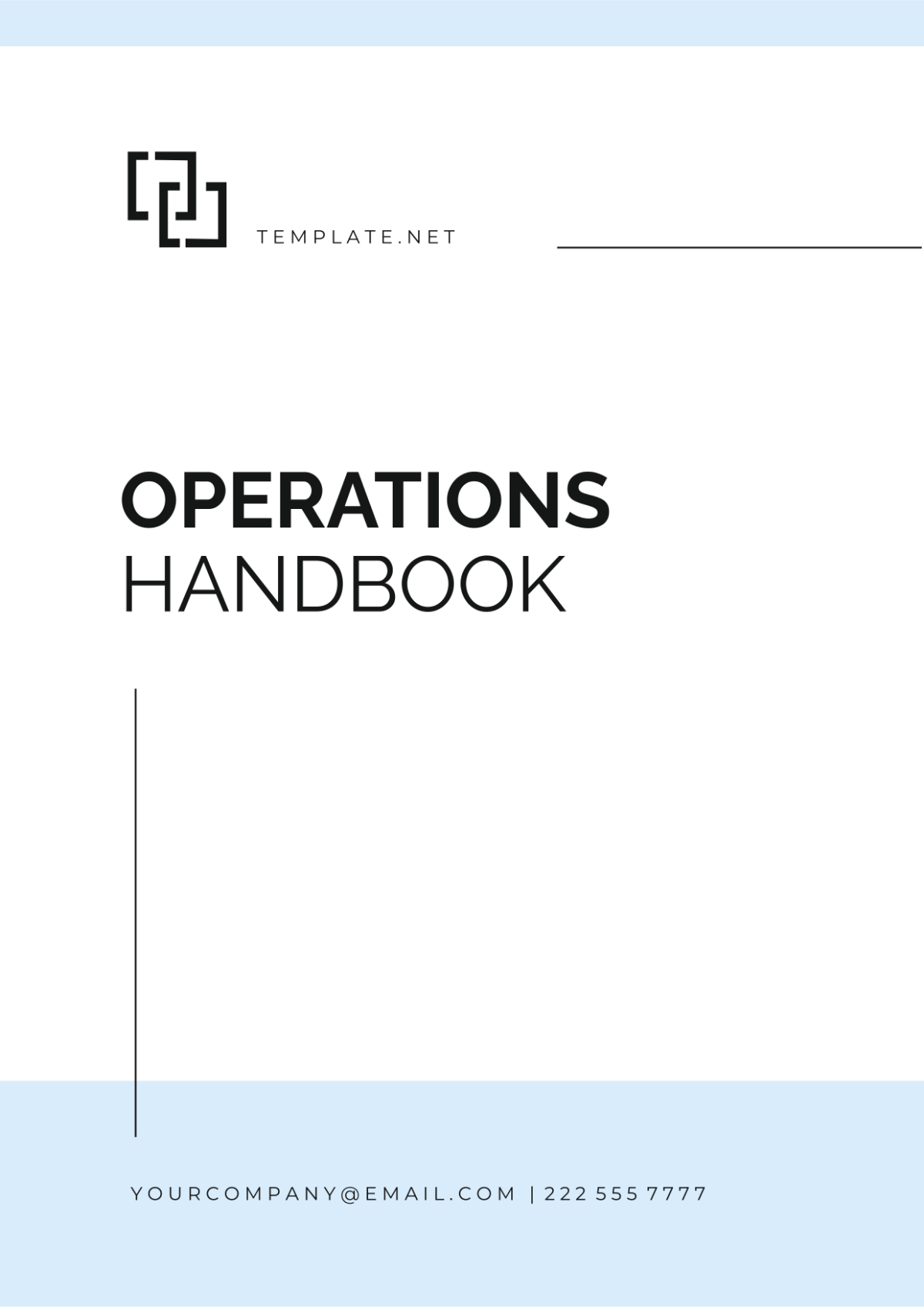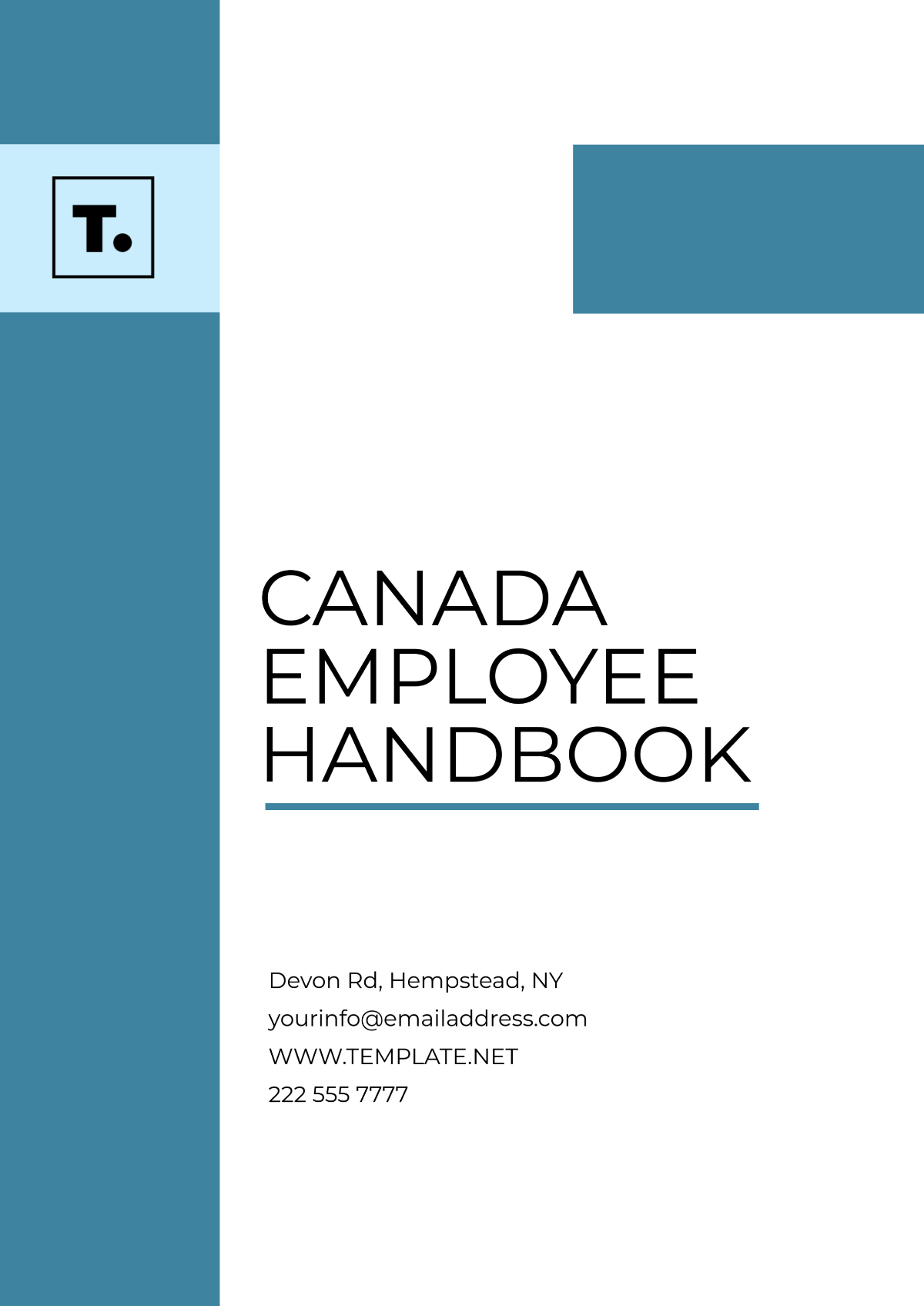Account Budget Management Handbook
1. Introduction to Account Budget Management
Welcome to the [YOUR COMPANY NAME] Account Budget Management Handbook, your essential guide to mastering the intricacies of budget management. In today's dynamic business landscape, the ability to effectively create, manage, and adjust an account budget is not just an advantage; it's a necessity. This handbook is designed as a comprehensive tool to navigate you through the complexities of budgeting, from the initial stages of creation to the ongoing processes of management and adjustment.
Our objective is to equip you with a user-friendly resource that empowers you with both the knowledge and the confidence to adeptly handle your account's budget. We understand that each business is unique, with its specific challenges and needs. Therefore, this guide is structured to offer flexibility, allowing you to adapt the principles to your particular situation. A well-managed budget is more than just numbers on a spreadsheet; it's the backbone of a thriving business, enabling strategic decision-making, efficient resource allocation, and financial stability.
In this journey, you'll discover not only the foundational principles of budget management but also practical tips, case studies, and interactive tools designed to enhance your learning experience. Whether you're a seasoned finance professional or new to budget management, this handbook will serve as a valuable reference, guiding you towards financial stewardship and success in your organization.
2. Budgeting Basics
Understanding the basics of budgeting is akin to learning the rules of the road before driving a car. A budget, in its essence, is a financial blueprint for your business, outlining both the expected income and the projected expenses over a specific period. This financial plan is crucial for several reasons:
Informed Decision-Making: A well-structured budget provides a clear overview of your business's financial health, enabling informed decisions about investments, cost-cutting, and resource allocation.
Expenditure Control: By setting financial boundaries, a budget helps prevent overspending in certain areas, ensuring that resources are used efficiently and effectively.
Profit Growth: By monitoring income and expenses, a budget helps identify opportunities for increasing revenue and reducing unnecessary costs, directly contributing to profit growth.
Financial Health: A budget is a tool for ensuring the financial stability of your business, allowing for the anticipation of cash flow needs and the planning for future financial challenges.
However, budgeting is not a set-it-and-forget-it task; it is a dynamic process that requires regular review and adjustment. The business environment is constantly changing, with new challenges and opportunities arising. Regular budget reviews allow you to adapt to these changes, ensuring that your budget remains aligned with your business goals and the external environment.
Creating a budget involves several key steps:
Estimate Your Income: Start by forecasting your revenue, considering all possible income sources, including sales, investments, and any other revenue streams.
List Your Expenses: Compile a comprehensive list of expected expenses, such as salaries, rent, utilities, and materials. Don't forget to account for variable costs and unexpected expenses.
Set Financial Goals: Define clear, achievable financial goals for your business. These could range from increasing profit margins to expanding your market presence.
Draft Your Budget: With your income, expenses, and goals defined, construct your budget. Aim for a balance that supports your business goals while maintaining financial health.
Remember, the key to successful budgeting lies not only in the numbers but also in understanding the story they tell about your business. By mastering the basics of budgeting, you lay the groundwork for informed decision-making, efficient resource management, and long-term financial success.
3. Creating a Business Account Budget
Crafting a budget for your business account is a crucial step towards financial discipline and strategic planning. It involves understanding your cash flow, forecasting future finances, setting achievable goals, and creating a plan that aligns with your business's objectives. Here's how to approach this process:
3.1 Identify Your Income
The first step in creating a budget is to have a comprehensive understanding of all income sources. This includes:
Sales Revenue: The primary source of income for most businesses, calculated by multiplying the number of units sold by the price per unit.
Returns on Investments: Income from investments made by the business, such as interest, dividends, and profits from asset sales.
Loans and Grants: Any financial injections received through loans or grants should be included, although they may not be regular income streams.
Miscellaneous Income: Consider other less obvious income sources, such as rental income from property owned by the business or income from licensing agreements.
3.2 Forecast Your Expenses
Identifying and forecasting expenses is critical to prevent cash flow problems. Expenses typically include:
Fixed Costs: Regular payments like rent, salaries, and insurance that don't change from month to month.
Variable Costs: Expenses that fluctuate with business activity, such as raw material costs, utility bills, and shipping charges.
One-time Expenses: Infrequent costs such as equipment purchases, renovations, or emergency repairs.
Debt Repayments: Include interest and principal payments on any business loans.
3.3 Set Your Goals
Setting financial goals gives your budget a direction and purpose. Goals should be SMART: Specific, Measurable, Achievable, Relevant, and Time-bound.
Examples include:
Profit Targets: Aim for a specific percentage increase in net profit over the previous period.
Cost Reduction: Identify areas where expenses can be reduced without compromising on quality or output.
Growth and Expansion: Allocate funds for research and development, marketing, or expanding into new markets.
3.4 Create Your Budget
With a clear understanding of your income, expenses, and goals, you can now draft a comprehensive budget. This involves:
Balancing Income and Expenditure: Ensure your projected income exceeds or at least matches your forecasted expenses to avoid deficits.
Allocating Funds: Prioritize spending based on your goals, ensuring that essential costs are covered first.
Contingency Planning: Set aside a portion of the budget for unforeseen expenses to provide financial flexibility.
4. Monitoring and Controlling Your Budget
Creating a budget is just the beginning. The real challenge lies in adhering to it and making necessary adjustments based on actual performance. Here's how to effectively monitor and control your budget:
4.1 Regular Review
Conducting regular budget reviews is essential for staying on track. This could be monthly, quarterly, or annually, depending on the size and nature of your business. During these reviews, compare budgeted figures against actual results to identify variances.
4.2 Track Actuals vs Forecast
Tracking actual income and expenses against forecasted numbers helps in understanding where the business stands. Use accounting software or spreadsheets to record and compare these figures regularly. This will highlight areas of over or underperformance, allowing for timely interventions.
4.3 Use Analytical Tools
Employing analytical tools can provide deeper insights into your budget's performance:
Variance Analysis: Identifies discrepancies between projected and actual figures, helping to understand the reasons behind these variances.
Trend Analysis: Examines financial data over time to identify patterns or trends, aiding in more accurate forecasting.
Ratio Analysis: Uses key financial ratios, such as the current ratio, debt-to-equity ratio, and gross margin ratio, to assess the financial health and performance of the business.
Monitoring and controlling your budget is a dynamic process that requires constant attention and adjustment. By staying engaged with your budget, you can make informed decisions that steer your business towards its financial goals.
5. Adjusting the Budget
 Fig 1: Infographic Example of Account Budget Management
Fig 1: Infographic Example of Account Budget Management
In the ever-evolving landscape of business, flexibility and adaptability are key, especially when it comes to budget management. Recognizing when and how to adjust your budget is crucial for maintaining financial health and capitalizing on new opportunities. Here's a structured approach to making necessary budget adjustments:
5.1 Recognize the Need
The first step in adjusting your budget is to acknowledge the need for change. This can be triggered by various factors, such as:
Market Fluctuations: Shifts in market demand or supply can impact your sales and procurement costs.
Economic Changes: Inflation, recession, or changes in interest rates can affect your budget assumptions.
Operational Shifts: Changes in operational efficiency, product lines, or business strategies necessitate budget review.
Unexpected Events: Unforeseen circumstances like natural disasters, pandemics, or sudden shifts in regulatory policies can disrupt your planned budget.
Staying attuned to these changes and understanding their impact on your business is essential for timely budget adjustments.
5.2 Re-evaluate Goals
Once the need for adjustment is recognized, revisit your initial budgeting goals. Assess whether these goals are still relevant and achievable under the current circumstances. Consider:
Strategic Alignment: Ensure your revised budget aligns with the long-term strategic goals of your business.
Realistic Targets: Adjust your financial targets based on the new business realities to ensure they remain challenging yet achievable.
Priority Shifts: Reassess your priorities in light of recent changes and reallocate resources to areas with the highest strategic importance.
5.3 Reframe the Budget
With a clear understanding of the necessary changes and redefined goals, you can now reframe your budget. This involves:
Adjusting Forecasts: Update your income and expense forecasts based on the latest available data and trends.
Resource Reallocation: Shift resources from lower-priority areas to those of higher importance or where greater opportunities lie.
Contingency Planning: Enhance your contingency planning to accommodate unforeseen expenses, ensuring your budget remains resilient.
Regularly adjusting your budget ensures it remains a living document that accurately reflects your business's current situation and future direction.
6. Frequently Asked Questions
Q: How often should I review and adjust my budget?
A: It's advisable to review your budget regularly, at least quarterly, to ensure it remains aligned with your business operations and goals. However, significant events or changes in the business environment may necessitate more frequent reviews.
Q: Can technology help in budget management and adjustment?
A: Yes, various budgeting software and tools can significantly enhance the efficiency and accuracy of budget management. These tools offer features like real-time data analysis, forecasting, and scenario planning, which are invaluable for making informed budget adjustments.
Q: How can I prepare my budget for unforeseen events?
A: Incorporating a contingency fund within your budget can provide a financial cushion for unexpected events. It's also wise to regularly conduct scenario analysis to understand the potential impact of various unforeseen events and plan accordingly.
Q: Should budget adjustments always lead to cost-cutting?
A: Not necessarily. While reducing unnecessary expenses is common during budget adjustments, it's also about reallocating resources more effectively. Sometimes, investing more in certain areas can drive growth and profitability.
Q: How do I ensure that budget adjustments don't negatively impact my business operations?
A: Effective communication and strategic planning are key. Ensure that all stakeholders understand the reasons behind budget adjustments and their roles in implementing changes. Prioritize adjustments that enhance operational efficiency and strategic goals without compromising the quality of your products or services.
By addressing these FAQs, we aim to clarify common concerns and provide practical guidance in navigating the complexities of account budget management.
7. Conclusion
Effective account budget management stands as the cornerstone of financial success and operational excellence in any business. Through the meticulous crafting, regular monitoring, and timely adjustment of your budget, you can navigate the complexities of the business environment with confidence and strategic foresight. This handbook is designed not only as a guide but as a companion in your journey towards achieving financial discipline, strategic growth, and long-term sustainability.
By embracing the principles and practices outlined herein, you are equipped to make informed decisions, optimize resources, and capitalize on opportunities, thereby steering your organization towards its envisioned future. Remember, a well-managed budget is more than a set of numbers; it's a reflection of your business's goals, a blueprint for your strategies, and a measure of your success. We hope that this handbook serves as a valuable resource in your ongoing pursuit of financial stewardship and business excellence. Your commitment to prudent budget management today lays the foundation for the prosperity and resilience of your business tomorrow.

















































